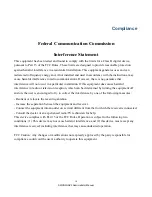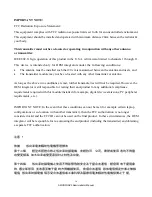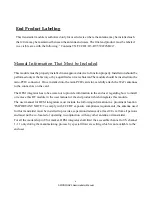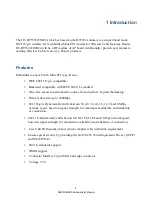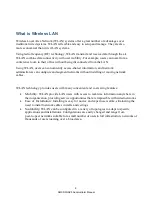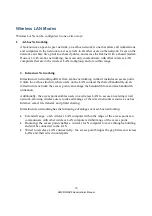
9
SMCD3GNV5 Administrator Manual
What is Wireless LAN
Wireless Local Area Network (WLAN) systems offer a great number of advantages over
traditional wired systems. WLAN is flexible and easy to setup and manage. They are also
more economical than wired LAN systems.
Using radio frequency (RF) technology, WLAN transmit and receive data through the air.
WLAN combine data connectivity with user mobility. For example, users can roam from a
conference room to their office without being disconnected from the LAN.
Using WLAN, users can conveniently access-shared information, and network
administrators can configure and augment networks without installing or moving network
cables.
WLAN technology provides users with many convenient and cost saving features:
Mobility: WLAN provide LAN users with access to real-time information anywhere in
their organization, providing service opportunities that are impossible with wired networks.
Ease of Installation: Installing is easy for novice and expert users alike, eliminating the
need to install network cables in walls and ceilings.
Scalability: WLAN can be configured in a variety of topologies to adapt to specific
applications and installations. Configurations are easily changed and range from
peer-to-peer networks suitable for a small number of usersto full infrastructure networks of
thousands of users roaming over a broad area.



